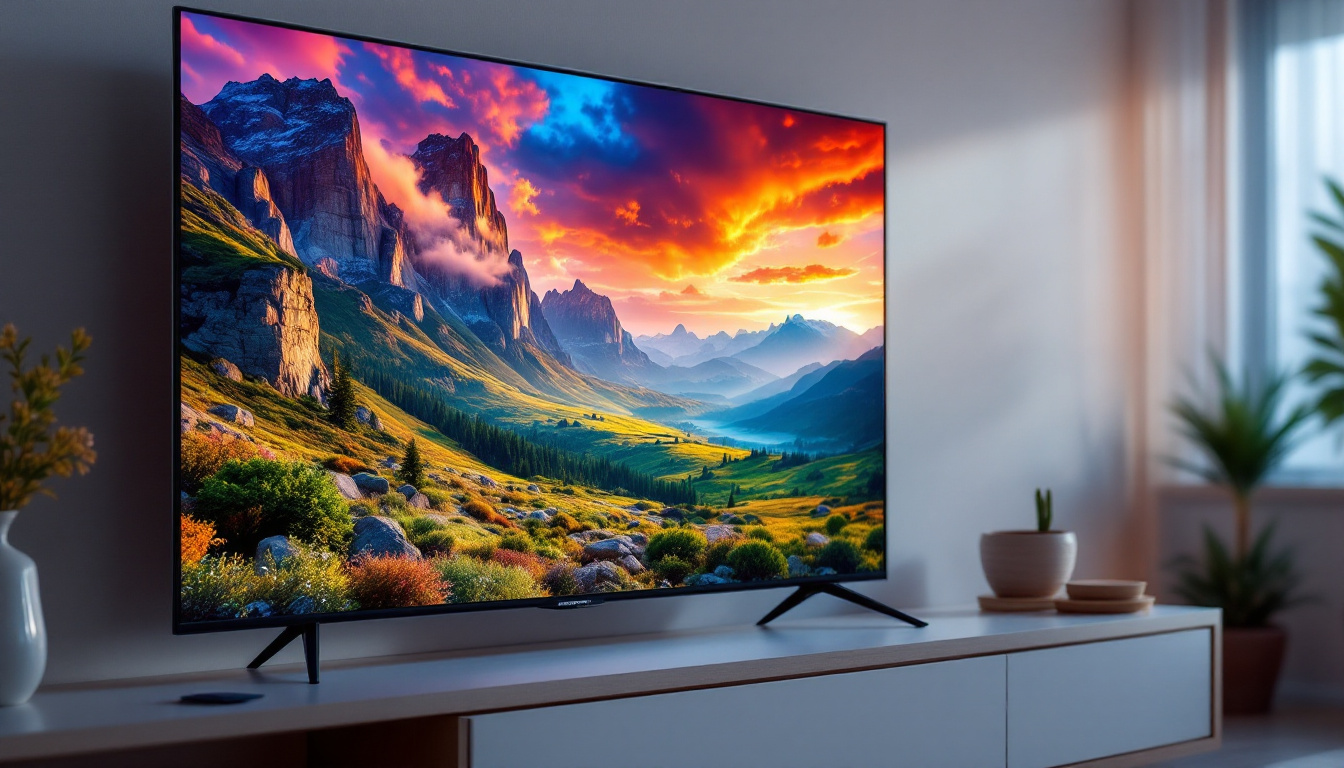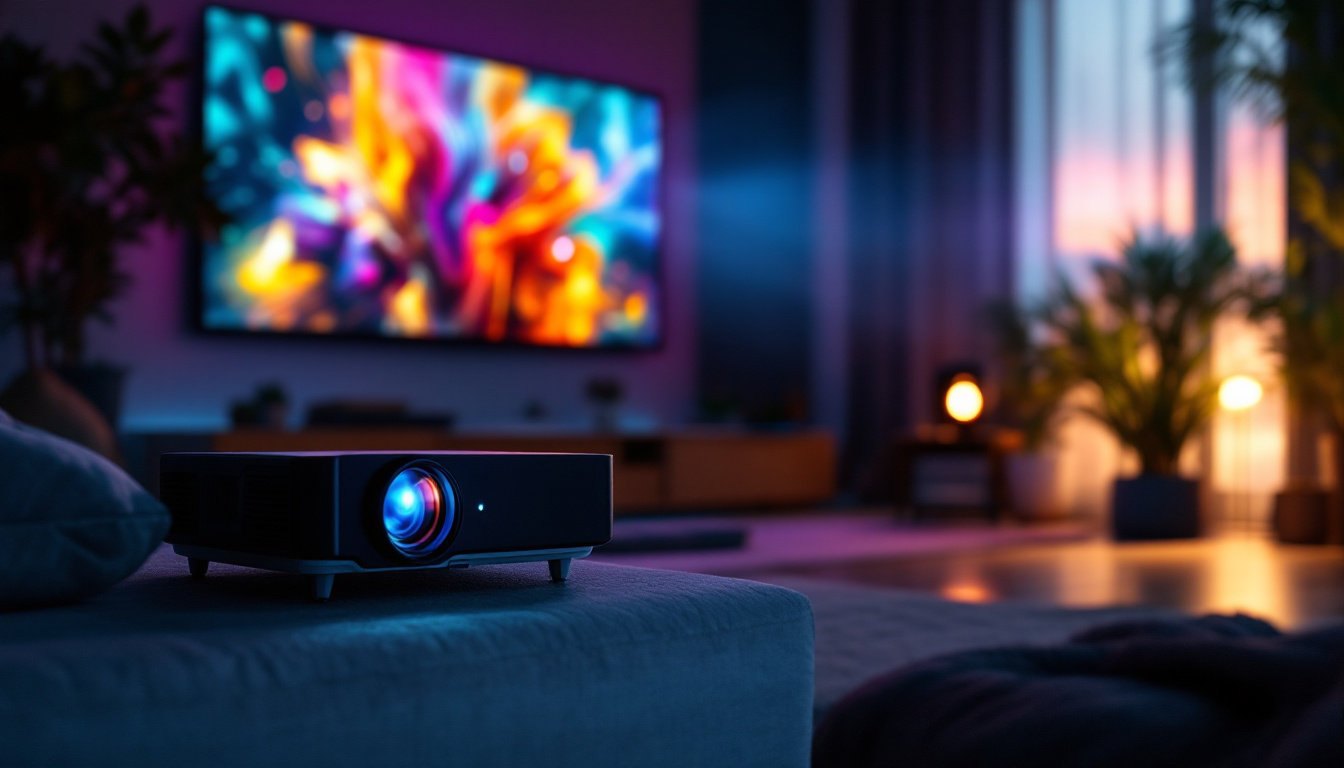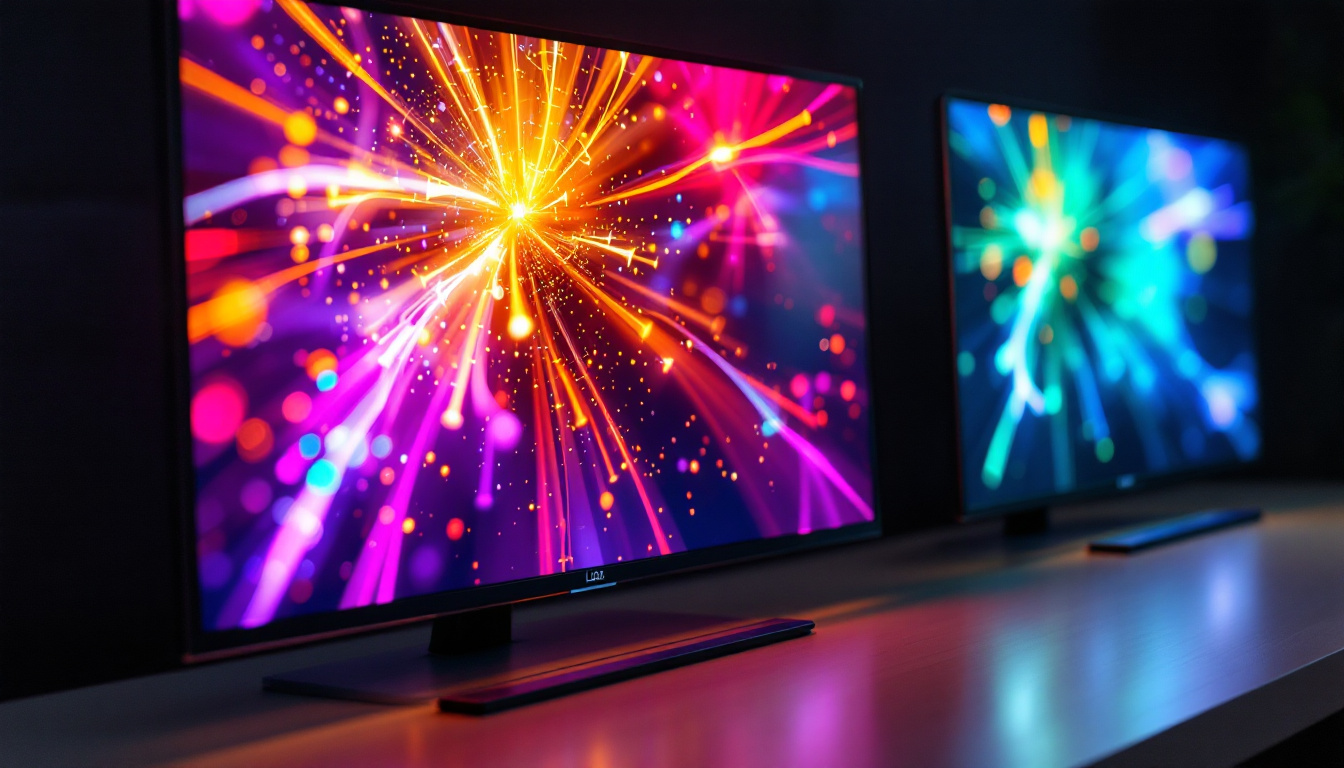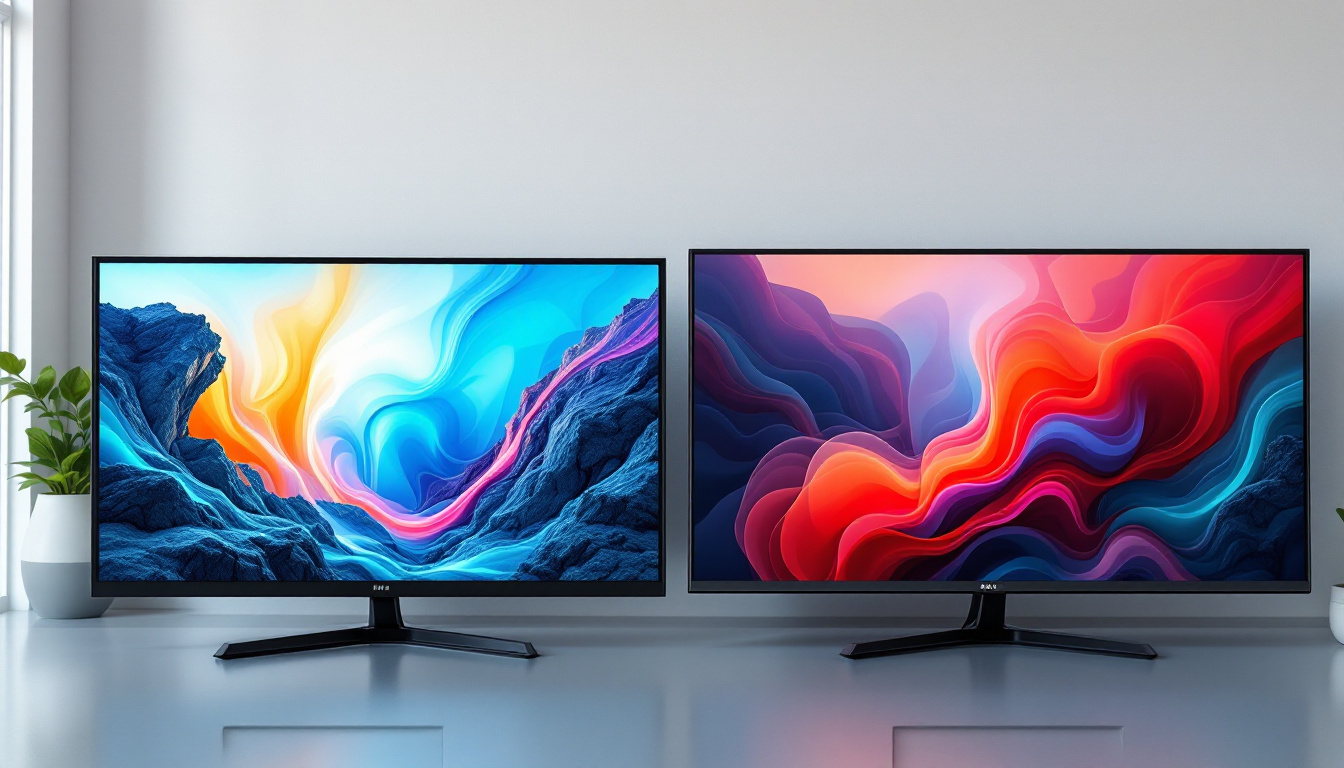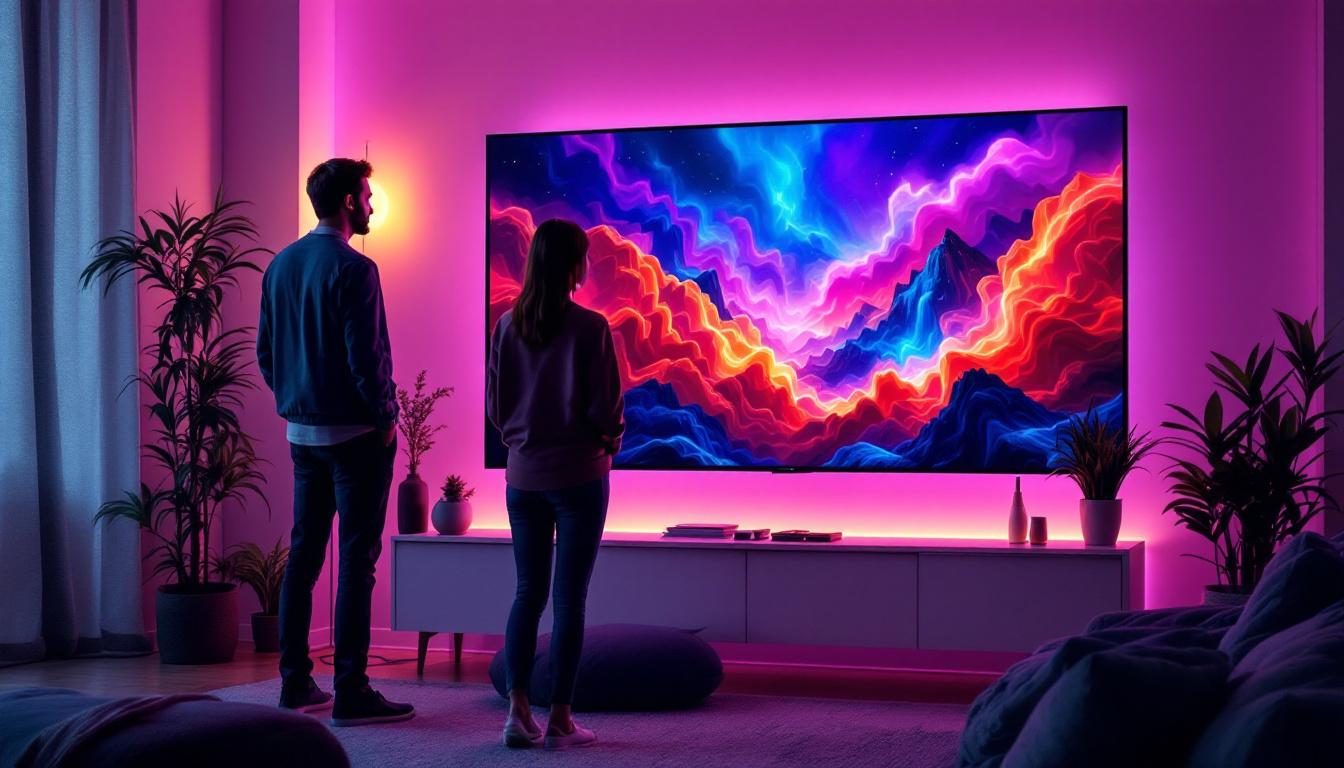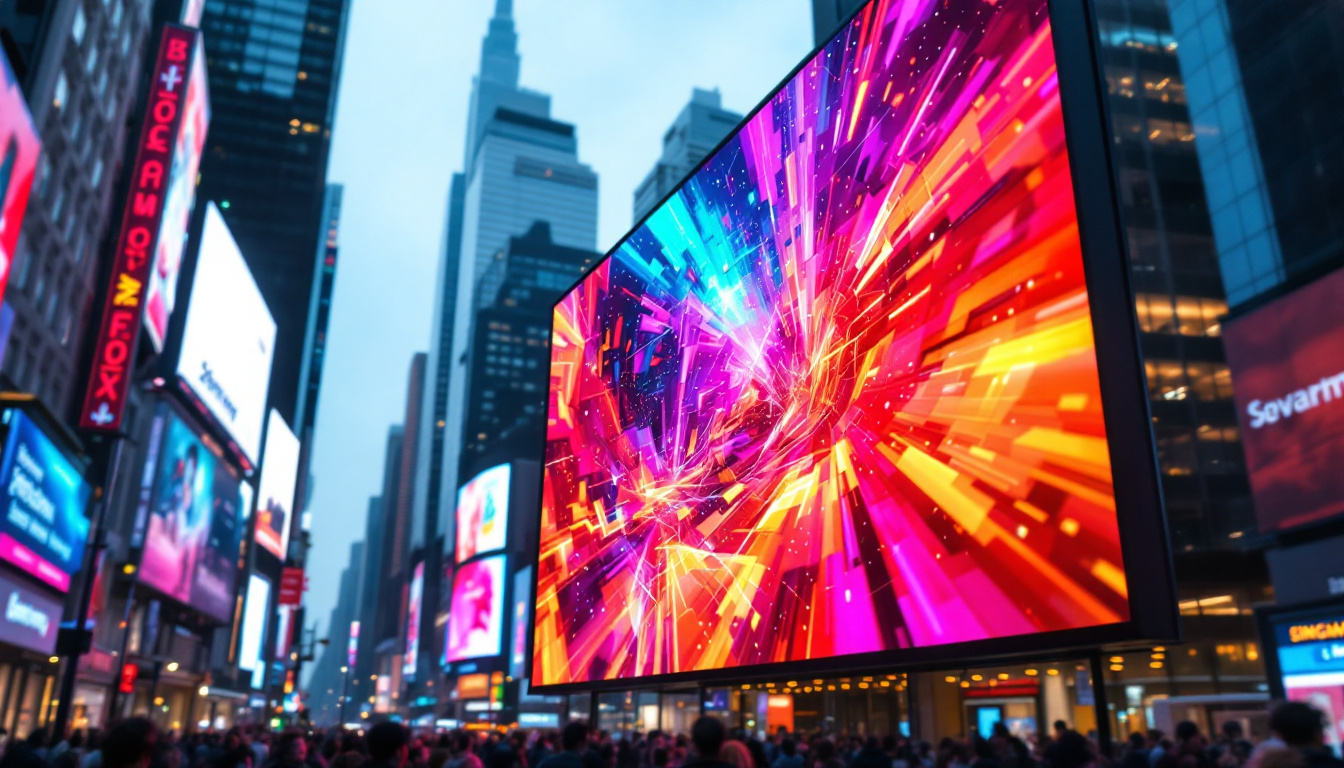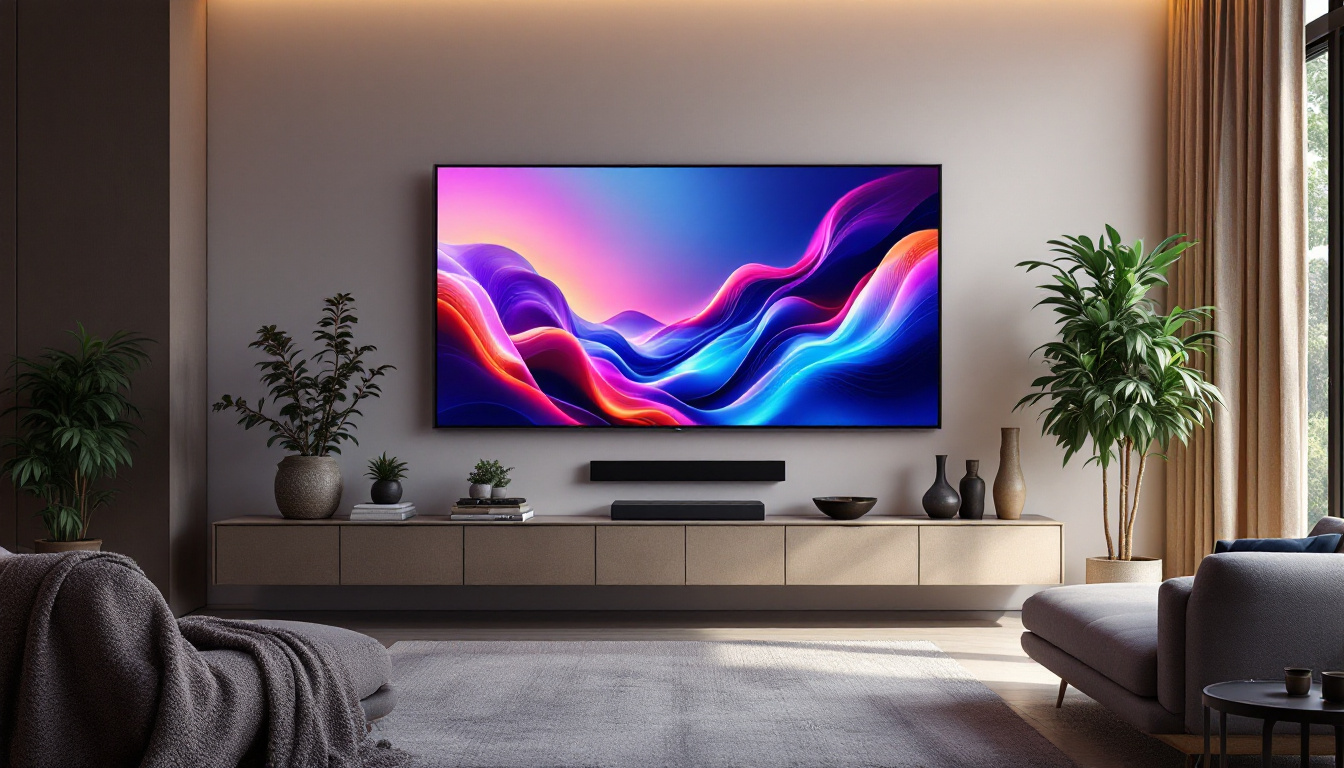In the realm of modern television technology, LED (Light Emitting Diode) displays have emerged as a dominant force, revolutionizing the way audiences experience visual media. With their vibrant colors, deep contrasts, and energy efficiency, LED TVs have become a staple in households around the globe. This article delves into the intricacies of LED displays, exploring their technology, advantages, and the various types available in the market today.
Understanding LED Technology
LED technology is a type of flat panel display that utilizes light-emitting diodes to produce images. Unlike traditional LCDs, which rely on fluorescent backlighting, LED TVs use these tiny diodes to create light and color directly. This fundamental difference leads to several advantages in terms of picture quality, energy consumption, and overall performance.
How LED Displays Work
At the core of an LED display are thousands of tiny diodes that emit light when an electric current passes through them. These diodes are arranged in a grid, and each one can be turned on or off independently. This capability allows for precise control over brightness and color, resulting in stunning visuals.
There are two primary types of LED displays: edge-lit and full-array. Edge-lit displays have LEDs positioned along the edges of the screen, while full-array displays feature a grid of LEDs behind the entire screen. Full-array displays typically offer better contrast and color accuracy due to their ability to dim specific areas of the screen, enhancing the viewing experience. Additionally, some full-array models incorporate local dimming technology, which further refines the contrast by allowing certain zones to be dimmed while others remain bright, creating a more dynamic image.
The Role of Color and Contrast
Color accuracy and contrast ratio are vital components of any display technology. LED TVs excel in these areas due to their ability to produce deeper blacks and brighter whites. The contrast ratio, which is the difference between the darkest and lightest parts of an image, is significantly improved in LED displays compared to traditional LCDs.
Moreover, advancements in color technology, such as Quantum Dot and HDR (High Dynamic Range), have further enhanced the capabilities of LED TVs. These technologies allow for a broader color spectrum and greater detail in both shadows and highlights, resulting in a more immersive viewing experience. Quantum Dot technology, for instance, uses tiny semiconductor particles to emit specific colors when illuminated, leading to vibrant and lifelike hues. HDR, on the other hand, expands the range of brightness and contrast, allowing viewers to see details in both the brightest and darkest scenes that would otherwise be lost. This combination of technologies not only elevates the visual experience but also brings cinematic quality to home entertainment.
Advantages of LED TVs
LED TVs offer a myriad of benefits that make them a popular choice among consumers. From energy efficiency to superior picture quality, these advantages contribute to the growing preference for LED technology in home entertainment systems.
Energy Efficiency
One of the most significant advantages of LED TVs is their energy efficiency. Compared to traditional LCD and plasma TVs, LED displays consume less power, making them an environmentally friendly option. This efficiency not only reduces electricity bills but also contributes to a lower carbon footprint.
Many LED TVs come with energy-saving features, such as automatic brightness adjustment and power-saving modes, which further enhance their efficiency. As energy costs continue to rise, opting for an LED TV can lead to substantial savings over time.
Longevity and Durability
LED technology is known for its longevity and durability. LED TVs typically have a longer lifespan than traditional displays, often lasting over a decade with proper care. This longevity is attributed to the solid-state nature of LEDs, which are less prone to burn-in and other issues commonly associated with older technologies.
Additionally, LED TVs are generally more resistant to shock and vibration, making them a reliable choice for households with children or pets. This durability ensures that consumers can enjoy their investment for years to come without worrying about frequent replacements.
Sleek Design and Thin Profile
Another appealing aspect of LED TVs is their sleek design and thin profile. The advancements in LED technology have allowed manufacturers to create ultra-thin screens that can easily fit into any living space. This aesthetic appeal is complemented by the ability to mount these TVs on walls, providing a modern and sophisticated look.
The compact design also allows for larger screen sizes without compromising on space, making it easier for consumers to choose a TV that suits their needs and preferences. Whether for a cozy apartment or a spacious living room, LED TVs offer versatility in design.
Types of LED TVs
As the demand for LED technology has grown, various types of LED TVs have emerged, each catering to different preferences and needs. Understanding these types can help consumers make informed decisions when purchasing a new television.
Edge-Lit LED TVs
Edge-lit LED TVs are among the most common types available on the market. In these displays, LEDs are positioned along the edges of the screen, allowing for a thinner profile. While they are generally more affordable, edge-lit TVs may struggle with uniform brightness across the screen, leading to potential issues with picture quality in certain viewing conditions.
Despite this limitation, edge-lit TVs are a popular choice for many consumers due to their affordability and sleek design. They are particularly suitable for casual viewing environments where high-end picture quality is not the primary concern.
Full-Array LED TVs
Full-array LED TVs feature a grid of LEDs positioned directly behind the screen, providing superior brightness and contrast. This technology allows for local dimming, where specific areas of the screen can be dimmed or brightened independently, resulting in deeper blacks and more vibrant colors.
While full-array LED TVs are typically more expensive than their edge-lit counterparts, the enhanced picture quality makes them a worthwhile investment for avid movie watchers and gamers. The ability to display HDR content effectively further elevates the viewing experience.
OLED vs. LED
While LED TVs dominate the market, another technology, OLED (Organic Light Emitting Diode), has gained popularity for its exceptional picture quality. Unlike LED displays, OLED panels emit their light, allowing for perfect blacks and an infinite contrast ratio.
However, OLED TVs tend to be pricier than LED options, and concerns about burn-in have been raised. For consumers who prioritize picture quality above all else, OLED may be the preferred choice, while LED TVs remain an excellent option for those seeking a balance between performance and affordability.
Choosing the Right LED TV
When it comes to selecting the right LED TV, several factors should be considered to ensure the best fit for individual needs and preferences. Understanding the various features and specifications can help guide consumers in making an informed decision.
Screen Size and Viewing Distance
Screen size is one of the most critical factors when choosing an LED TV. A larger screen can enhance the viewing experience, but it is essential to consider the viewing distance as well. As a general rule, the optimal viewing distance is about 1.5 to 2.5 times the diagonal size of the screen.
For example, if a consumer is considering a 55-inch TV, the ideal viewing distance would be between 6.5 to 11.5 feet. This distance allows for an immersive experience without straining the eyes. It is important to measure the available space and consider the layout of the room before making a purchase.
Resolution and Picture Quality
Resolution plays a significant role in picture quality, with common options including Full HD (1080p), 4K Ultra HD, and even 8K. 4K resolution has become the standard for most new LED TVs, offering four times the detail of Full HD. This increased resolution is particularly beneficial for larger screens, where individual pixels can become more noticeable.
Additionally, consumers should consider features such as HDR support, which enhances color and contrast, providing a more dynamic viewing experience. When evaluating picture quality, it is advisable to view the TV in person, if possible, to assess color accuracy and brightness levels.
Smart Features and Connectivity
Modern LED TVs often come equipped with smart features, allowing users to access streaming services, browse the internet, and connect with other smart devices. When choosing a TV, it is essential to consider the operating system and the availability of popular apps.
Connectivity options are also crucial. HDMI ports, USB ports, and wireless connectivity should be evaluated based on the devices that will be connected to the TV. Ensuring compatibility with gaming consoles, sound systems, and other peripherals can enhance the overall entertainment experience.
Conclusion
LED TVs have transformed the way consumers enjoy visual entertainment, offering a combination of stunning picture quality, energy efficiency, and sleek design. With various types available, including edge-lit and full-array models, as well as the emergence of OLED technology, there is a television to suit every preference and budget.
When selecting an LED TV, it is essential to consider factors such as screen size, resolution, and smart features to ensure the best fit for individual needs. As technology continues to evolve, LED displays are likely to remain at the forefront of home entertainment, providing viewers with an unparalleled experience for years to come.
In summary, whether for casual viewing or an immersive cinematic experience, LED TVs offer a compelling solution that caters to a wide range of consumers. Embracing this technology can lead to a more vibrant and enjoyable viewing experience, making it a worthy investment in today’s digital age.
Discover the Future of Visual Experience with LumenMatrix
Ready to elevate your viewing experience with the latest in LED display technology? Look no further than LumenMatrix, a pioneer in crafting LED display modules that redefine visual storytelling. Whether you’re in need of an Indoor LED Wall Display for your business, an Outdoor LED Wall Display for advertising, or any of our other innovative solutions like Vehicle LED Displays and Custom LED Displays, LumenMatrix has you covered. Embrace the future of vibrant and energy-efficient entertainment with our All-in-One and Transparent LED Displays. Don’t just watch; immerse yourself in the world of high-impact visuals. Check out LumenMatrix LED Display Solutions today and transform your space into a captivating visual journey.

